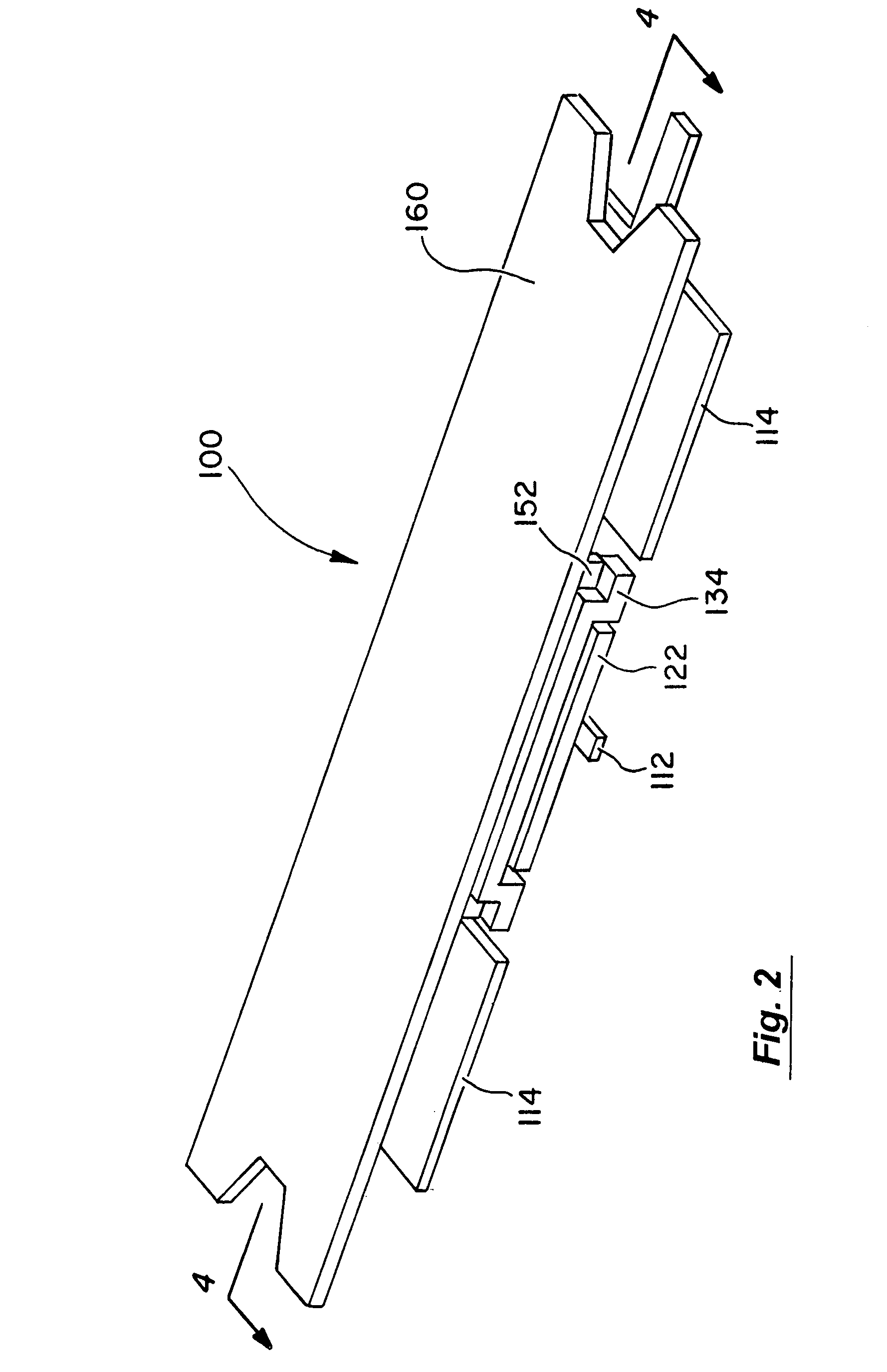Hidden flexure ultra planar optical routing element
a technology of ultra-planar optical routing and hidden flexure, applied in the field of micro-electricalmechanical systems, can solve the problems of complex compound process, difficult and expensive scaling of dwdm network using sonet/sdh technology, and explosion of global bandwidth demand
- Summary
- Abstract
- Description
- Claims
- Application Information
AI Technical Summary
Benefits of technology
Problems solved by technology
Method used
Image
Examples
Embodiment Construction
[0031]The general functionality of a wavelength router is to accept light having a plurality of spectral bands (i.e., “N” spectral bands) at an input port, and selectively direct subsets of the spectral bands to desired ones of a plurality of output ports (i.e., “M” output ports). The routers may include dynamic switching where the routing mechanism includes one or more routing elements whose state can be dynamically changed in the field to effect switching. The routers may also include static embodiments in which the routing elements are configured at the time of manufacture or under circumstances where the configuration is intended to remain unchanged during prolonged periods of normal operation.
[0032]The routers may include a dispersive element, such as a diffraction grating or a prism, which operates to deflect incoming light by a wavelength-dependent amount. Different portions of the deflected light are intercepted by different routing elements. Although the incoming light coul...
PUM
 Login to View More
Login to View More Abstract
Description
Claims
Application Information
 Login to View More
Login to View More - R&D
- Intellectual Property
- Life Sciences
- Materials
- Tech Scout
- Unparalleled Data Quality
- Higher Quality Content
- 60% Fewer Hallucinations
Browse by: Latest US Patents, China's latest patents, Technical Efficacy Thesaurus, Application Domain, Technology Topic, Popular Technical Reports.
© 2025 PatSnap. All rights reserved.Legal|Privacy policy|Modern Slavery Act Transparency Statement|Sitemap|About US| Contact US: help@patsnap.com



